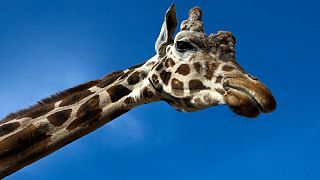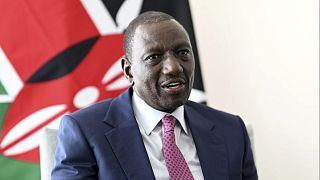Kenya
Already endangered Masai giraffes are even more at risk than previously thought.
According to Researchers from Penn State University in the US, a valley running between Kenya and Tanzania means the subspecies has divided into two groups which have not interbred in more than 250,000 years. So, two separate species are both at risk.
Interbreeding is of great significance as it enhances genetic diversity, thus shielding small populations from diseases.
The researchers analysed high-resolution satellite data in a bid to identify the routes that the giraffes might have used to potentially climb over, but they did not find any reports of the giraffes doing so.
Threatened species
Douglas Cavener, geneticist and evolutionary biologist at Penn State University, explained why this may be worrying.
"What we now know is that 35,000 giraffes are actually split into two, so there is no more than probably 20,000 giraffes on either side of the escarpment," he says.
"And that's really worrying because the total number of Masai giraffes is also known to be very small, and the International Union for Conservation of Nature, the so-called IUCN had declared the Masai giraffe to be a threatened species. But what actually makes things even more concerning and worrying is that, as the population gets really small, then that increases the probability that individuals that are very closely related to each other will breed with other and that can lead to what is called as inbreeding depression and that can go into a tailspin and the species can completely collapse."
The Great Rift Valley through Kenya and Tanzania prevents the giraffes from exchanging genetic material.
And it's not the only challenge facing them. Its population has declined over the last three decades from 70,000 to 35,000 individuals in the wild, thus leading to its classification as an endangered species by the IUCN (International Union for Conservation of Nature).
Executive director of Elephant Neighbours Centre, Jim Justus Nyamu, said: "Some of the things that we have seen even in parks, like Tsavo and Amboseli, where we are losing the tree cover, so giraffes are getting out of the park and the area they are moving into, they are actually on community land, so conflict continues to increase."
Poaching ban
Fewer giraffes means other species also suffer and conservationists are now campaigning for a giraffe poaching ban.
"I do know that our regulations, policy, giraffes were not classified as an endangered species. So, it is time the policy makers craft a wildlife policy immediately as soon as we can to put those animals there."
The Masai giraffe is also known as the Kilimanjaro giraffe and is found exclusively in Kenya and Tanzania.
The study was published in the Ecology and Evolution journal in June.













01:01
Kenya: Visa-free travel now available for many African and Caribbean countries
00:22
Boniface Kariuki, a Kenyan mask vendor shot at close range laid to rest
11:17
Bridging the legal gap in Africa’s digital boom {Business Africa}
Go to video
First Malaria treatment for babies approved
02:16
Kenya's William Ruto faces growing discontent over economy and police brutality
00:28
Nairobi hawker shot at close range by police declared brain dead